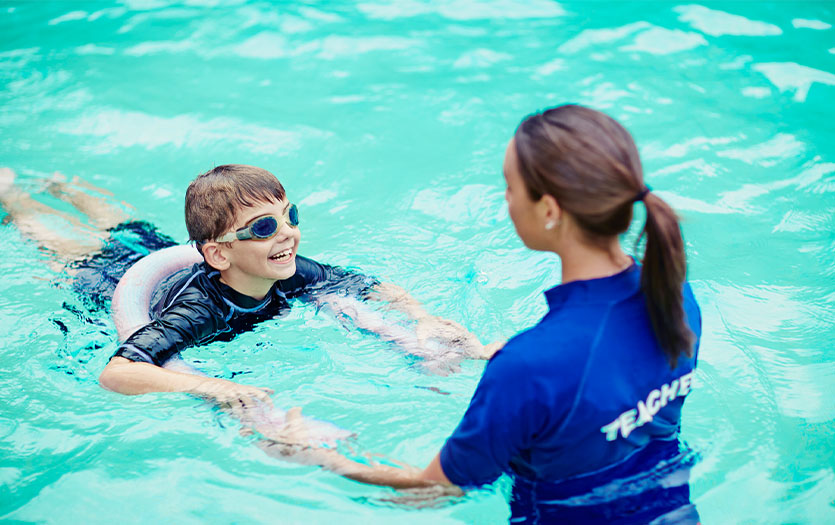
This post was written based on an appearance by Tony GiaQuinta, MD, PPG – Pediatrics, on the program PBS HealthLine.
It’s the height of summer in Northeast Indiana, and many of us are spending our free time in pools and on the lakes. Water is all around us, and while it’s fun to swim and enjoy it, the water can also pose a real danger to our children. Drowning is the number one cause of death in children ages one to four. That’s why it’s important to learn ways to prevent and reduce the risk, so we can all still have fun in and around the water.
Four layers of drowning prevention
Pediatricians stress prevention methods to help keep your children safe. There is no single prevention strategy to save your child, but rather, the American Academy of Pediatrics recommends layers of prevention. A good analogy for these layers of prevention is to think of slices of Swiss cheese. One slice has holes in it, but when you layer several slices on top of one another, each one helps plug the holes.
First layer – Adult supervision
This is the most important layer and probably the best way to save your child from a dangerous drowning accident. Never assume supervision when you are around water. You always have to keep an eye on your child and always be aware of when water is around. Often when we’re outside or around pools with a group of people, we can start to assume that the kids are being supervised. But too often, when you feel like everyone is watching, nobody really is.
One strategy to make sure an adult is always supervising is to designate a “water watcher.” That person is watching all the children in the water with their full attention—not on their phone, not grilling and not talking with friends. You can even give that person a lanyard with a sign on it as a visual and physical reminder of their duty. Then, when the watcher wants or needs a break, they can pass their lanyard to another adult to have a turn. This makes the passing of responsibility very deliberate, so it doesn’t get forgotten.
Second layer – Barriers
The second most important strategy of drowning prevention is to not let your children find the water and if you aren’t around, make sure that the water is protected. In 70% of drowning cases there isn’t another person around. This is why the American Academy of Pediatrics recommends that if you have a water source, like a pool, that you have a four-foot-tall enclosure around all four sides of the pool. This is high enough that a toddler couldn’t climb over it and will help keep them out of the pool if they slip out of your sight.
Third layer – Swim lessons
Pediatricians recommend swim lessons for all children as a basic life skill. Swim lessons should be done with an experienced coach and should include instruction for what to do if they accidentally fall into water. Swim lessons can also train kids and parents on basic water safety elements such as making sure they’re not walking too close to the pool, not running around the pool and so on. Parents should also keep swim lessons successive—not just one and done. Repetition will make sure they are truly successful for your children.
Fourth layer – CPR training
If your other layers of prevention fail, being trained in CPR can be a lifesaving skill. Have as many family members as possible get trained in CPR to help in case of an emergency. There are classes available through the American Red Cross that are easily accessible and can make a big difference.
More water safety tips
- Children can drown in only 1-2 inches of water. It’s important to always know where water is. Empty inflatable pools, bathtubs and buckets after use.
- When at the lake or on a boat, assume safety and have your children wear a life jacket that is U.S. Coast Guard certified.
- The American Academy of Pediatrics recommends always keeping your child within arm’s reach, even if they are wearing a life jacket.
- Never have swimmers supervised by an adult who has been drinking alcohol as it can decrease your awareness.
- Give children rest breaks from swimming. A good cadence used by many public pools is 45 minutes on and 15 minutes off for a rest.
With purposeful prevention strategies and mindfulness, we can all help reduce the risk and have fun with our kids in and around the water this summer.



